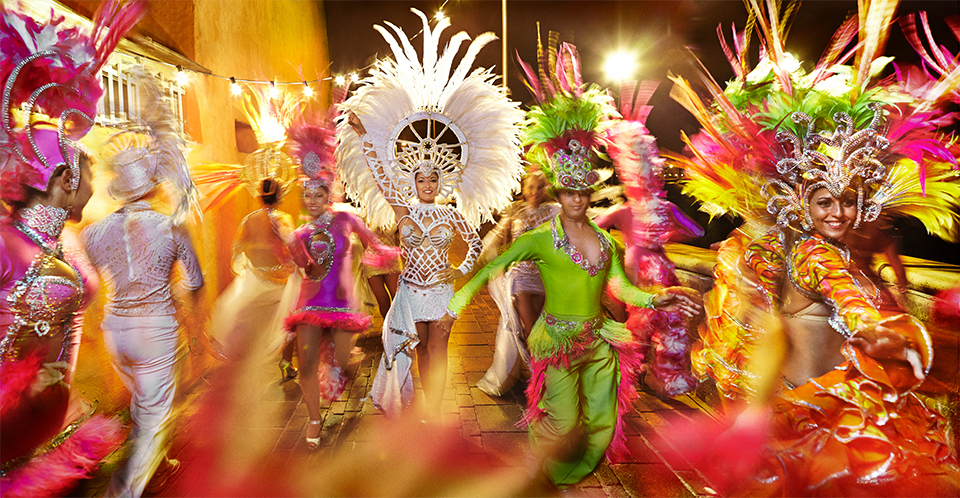Fiestas can be a confusing experience for expats living in Spain and the Canary Islands. They tend to creep up on you and there have been many times that I have found shops and offices to be closed when least expected.
Municipalities tend to celebrate fiestas on different days, which can also be confusing for workers living in one municipality, but working in another. Fiestas are a way of life in Spain and I often admire the ingenuity with which a fiesta can be linked with a weekend via a ‘puente day’ (bridging day) to create a very long weekend or even a week off work if the calendar works out correctly!
My favourite fiesta is ‘Día de Canarias (Canaries Day), which is celebrated throughout the Canary Islands. The actual day of celebration is 30 May, but celebrated on 29 May, which allows sufficient time to recover from excessive partying during the night before the actual day of celebration.
We can happily visit any shop or office in the full knowledge that it will be closed (unless in the tourist areas). At least we all know where we are with this fiesta, and there is little confusion about the date of this big event.
The Canary Islands consist of Gran Canaria, Tenerife, Lanzarote, Fuerteventura, La Gomera, La Palma, El Hierro and the Chinijo Archipelago, which include the islands of La Graciosa, Alegranza, Montaña Clara, Roque del Este and Roque del Oeste. Spain began the conquest of the islands in 1402, which were finally incorporated into the Kingdom of Castile in 1495. On 10 August 1982, the islands were granted autonomous community status within Spain.
Canaries Day is special, since it represents the culmination of long held desires for greater representation and autonomy of the islands within Spain. 30th May 1983 represents the first session of the Canarian Parliament, and was the beginning of a louder voice for the islands.
In the build-up to Canaries Day, Canarian flags are proudly displayed, balconies decorated with flowers and children dressed in their finest traditional Canarian costumes. It is a good time to taste and experience some of the unique Canarian dishes, as well as admiring local crafts. Schools encourage and remind children and local people of Canarian culture and traditions, with many schools holding special classes to remind residents of their place within the islands’ history and customs.
In many towns and villages there are special church services, sporting events, food tastings, animal shows, concerts of traditional music, and exhibitions of arts and crafts made by local people. Parties are often held at home or in restaurants on the evening of May 29th, and celebrations continue on the big day itself.
The flying of flags across the islands is also an important part of the celebrations. For British visitors, this can seem unusual, since the British public rarely fly the Union flag, and normally it only appears for formal state and ceremonial occasions, such as Royal weddings. In the Canary Islands, it is common to see the Canarian flag, the Spanish flag and, dare I say, the European Union flag, flying together to represent unity and harmony.
The first flag for the Canary Islands was created in 1961 by a political movement called ‘The Free Canary Islands’. The flag is a tricolour of equal vertical bands in white, blue and yellow, with the coat of arms of the Canary Islands on the blue band at the centre of the state flag.
Since arguments between the two largest islands, Tenerife and Gran Canaria, have been vociferous in the past, the flag sensibly combines the maritime flags of Tenerife and Gran Canaria, which are the blue and white colours of the Province of Santa Cruz de Tenerife with the blue and yellow colours of the Province of Las Palmas de Gran Canaria. The placement of the colours is said to correspond with the physical location of the two major islands, with white for Tenerife on the left, representing the island’s western location.
Yellow, for Gran Canaria, is on the right representing the island’s eastern location. The colour blue in the centre of the flag is the common colour for both islands and their provinces.
The coat of arms included on the state flag consists of a blue shield supported by two dogs. The two dogs are a reference to the Latin name ‘Insula Canaria’, which means ‘Island of Dogs’, which disappointingly has nothing at all to do with canary birds. There is a red crown at the top of the shield, demonstrating allegiance to Spain’s monarchy, and a banner with the word ‘Oceano’ above the crown.
Interestingly, although the islands are not an independent country, the flag can be found as an emoji on some of the more popular smartphone apps, which has created amusement and interest on the islands.
All of Spain’s autonomous communities celebrate their special days in ways that are appropriate to their unique culture and traditions. Wherever you are living or staying in Spain, do make an effort to participate and enjoy these special fiestas, since they are intrinsic parts of this amazing, vibrant and colourful country.
If you enjoyed this article, take a look at my websites: http://barriemahoney.com and http://thecanaryislander.com or read my latest book, ‘Living in Spain and the Canary Islands’ (ISBN: 9780995602724). Available in paperback, as well as Kindle editions.
Join me on Facebook: @barrie.mahoney
© Barrie Mahoney





